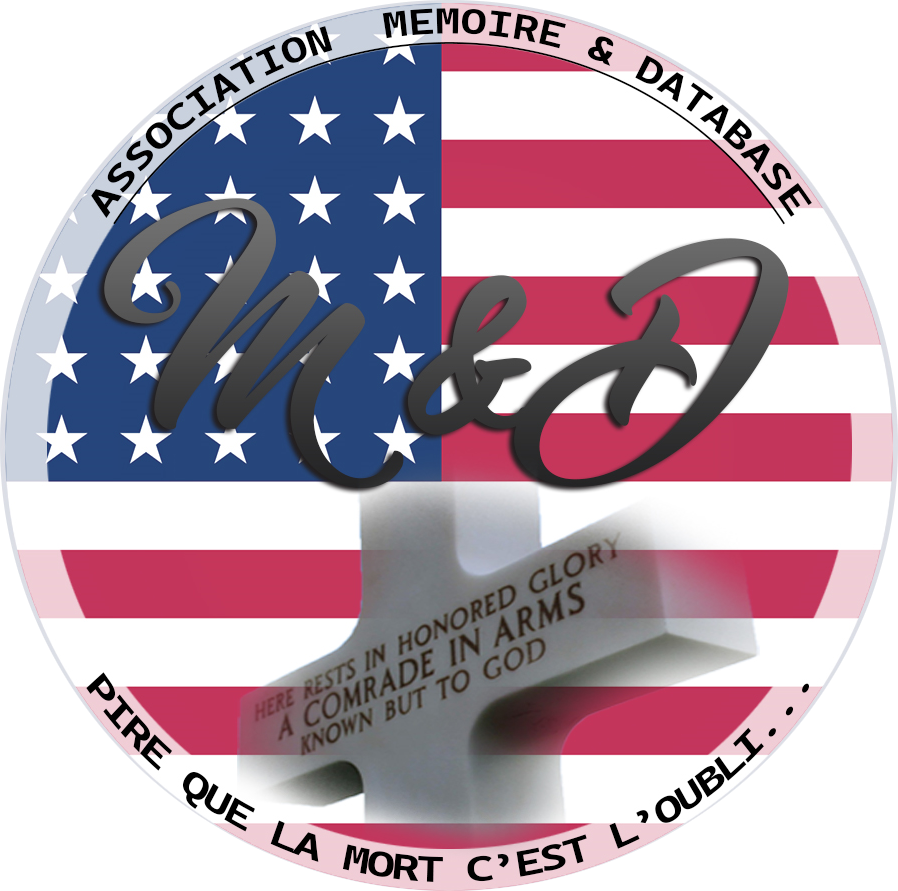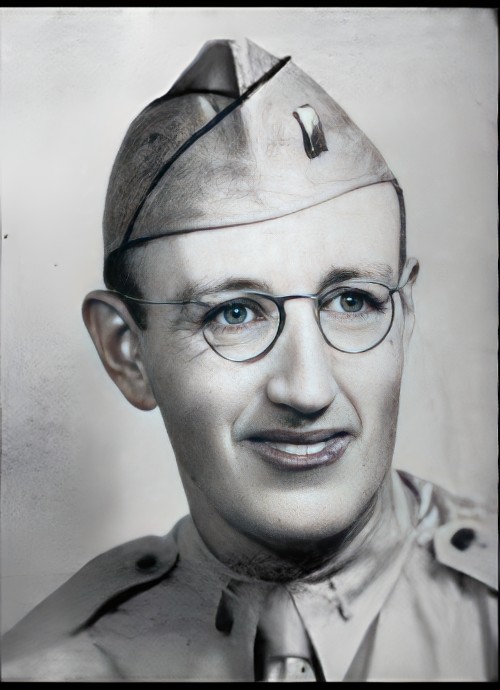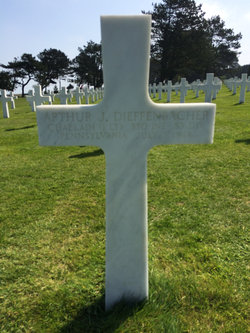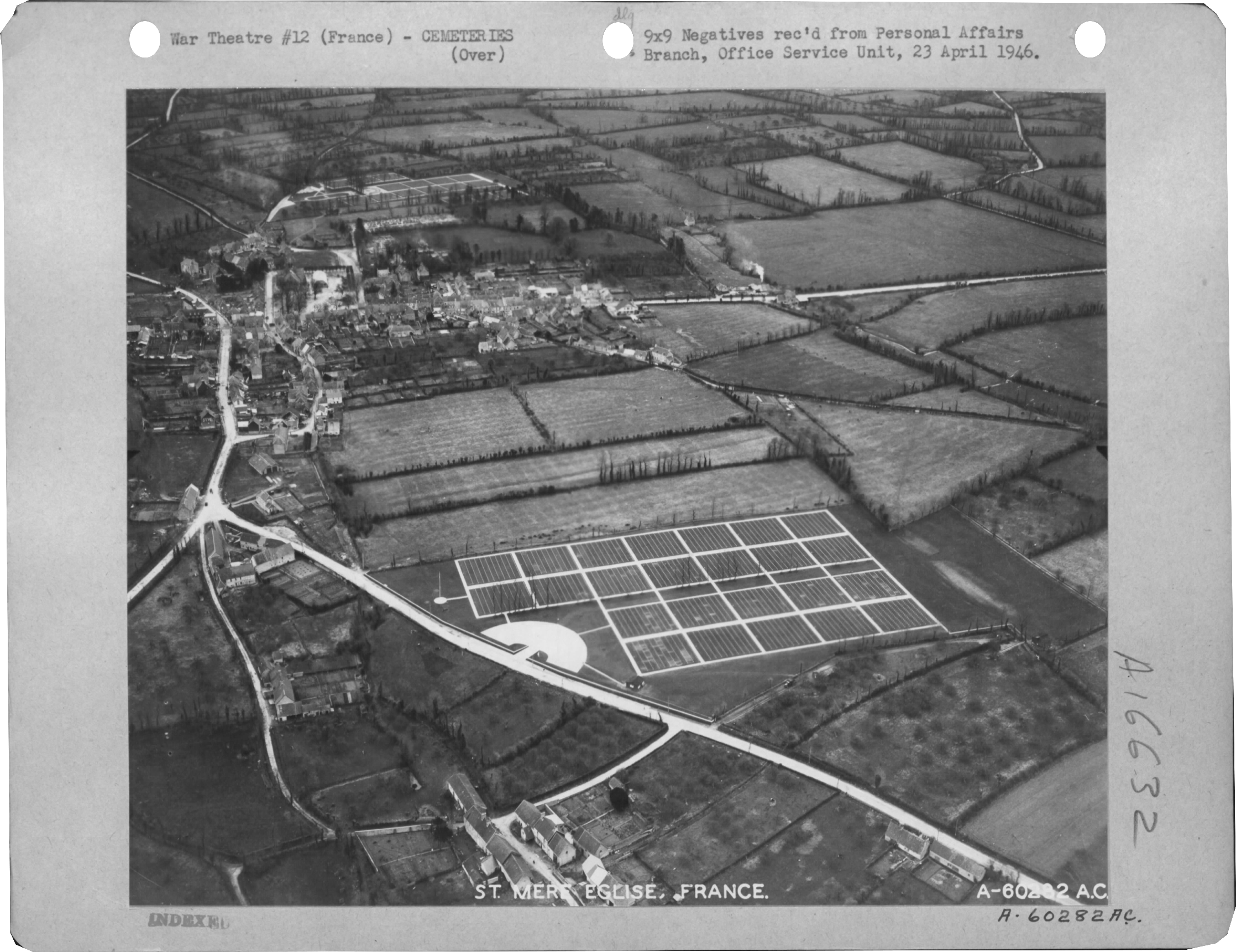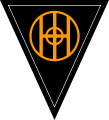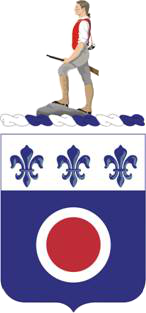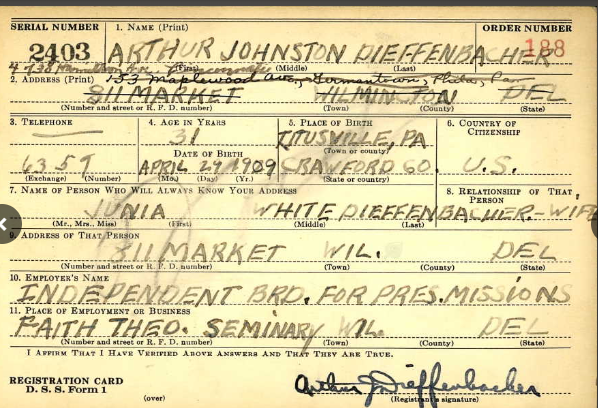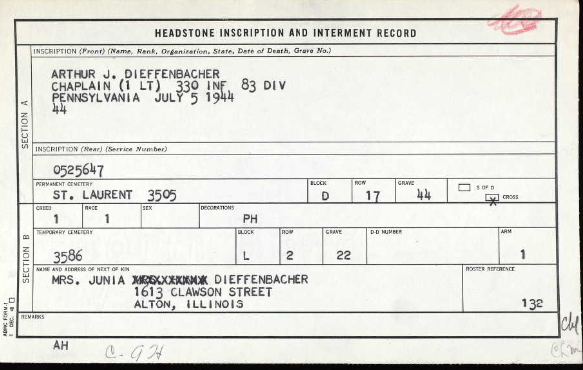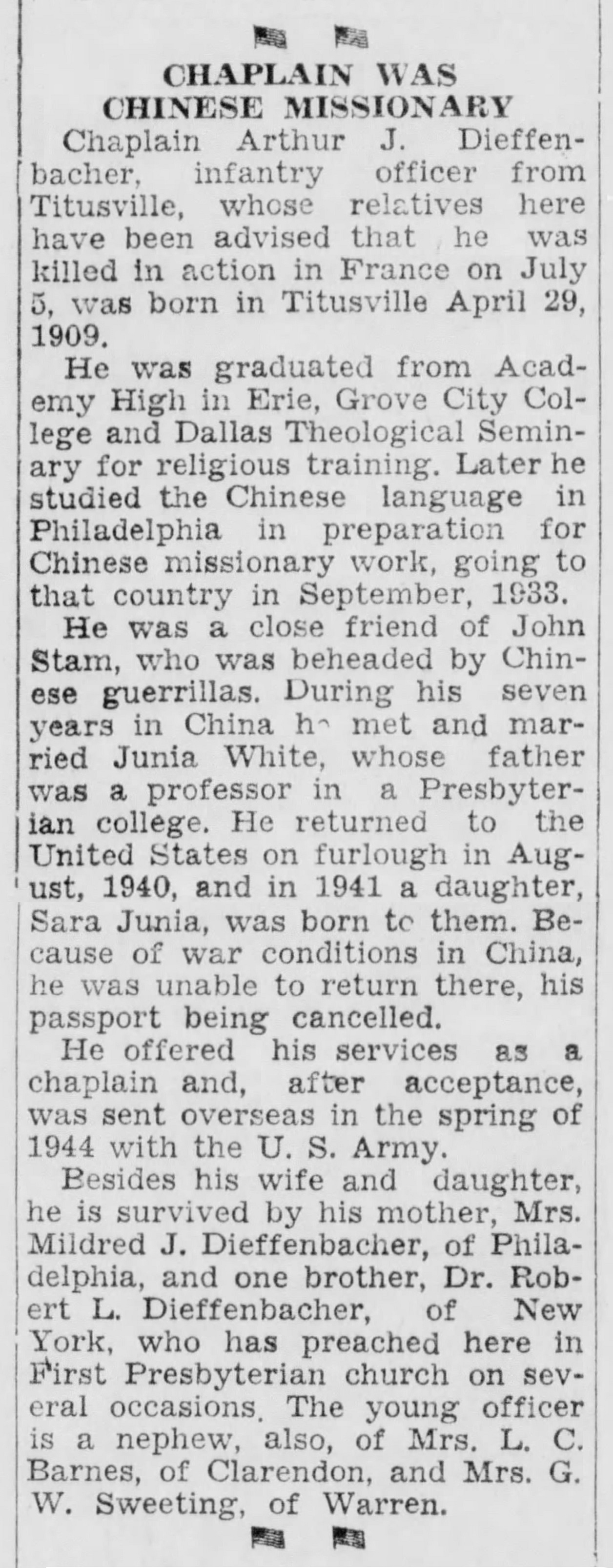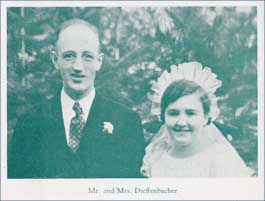|
Arthur Johnston DIEFFENBACHER
| ||||||||||||||||||||||||
|---|---|---|---|---|---|---|---|---|---|---|---|---|---|---|---|---|---|---|---|---|---|---|---|---|
|
Source : Arnaud Gaté (Ellen Marchese)
| ||||||||||||||||||||||||
| NUMERO DE SERVICE | O-525647 | |||||||||||||||||||||||
| AGE | 35 ans | |||||||||||||||||||||||
| DATE DE NAISSANCE | 29 avril 1909 Titusville, Crawford County, PENNSYLVANIA | |||||||||||||||||||||||
| ÉTAT D’ENRÔLEMENT | PENNSYLVANIA | |||||||||||||||||||||||
| FAMILLE |
Epouse : Junia White Fille : Sara Junia Parents : Lloyd Elmo & Mildred Johnston DIEFFENBACHER | |||||||||||||||||||||||
| GRADE | Chaplain - First Lieutenant | |||||||||||||||||||||||
| FONCTION | Aumonier | |||||||||||||||||||||||
| PROFESSION AVANT INCORPORATION |  | |||||||||||||||||||||||
| DATE D'INCORPORATION | ||||||||||||||||||||||||
| COMPANY | Company | |||||||||||||||||||||||
| REGIMENT | 330th Infantry Regiment | |||||||||||||||||||||||
| DIVISION | 83rd Infantry Division | |||||||||||||||||||||||
| DATE DU DECES | 5 juillet 1944 |
Source : Frogman | ||||||||||||||||||||||
| STATUT | KIA | |||||||||||||||||||||||
| LIEU DU DECES | ||||||||||||||||||||||||
| CIMETIERE PROVISOIRE |
CIMETIERE PROVISOIRE de Sainte Mère Eglise #2 N°3586
Histoire des Cimetières Provisoires
| |||||||||||||||||||||||
| CIMETIERE | NORMANDY AMERICAN CEMETERY de Colleville | |||||||||||||||||||||||
| TOMBE |
| |||||||||||||||||||||||
| DECORATION |
| |||||||||||||||||||||||
| ||||||||||||||||||||||||
| HISTOIRE | ||||||||||||||||||||||||
|
Source : Frogman | ||||||||||||||||||||||||
|
Source : Frogman | ||||||||||||||||||||||||
|
Arthur était le fils de Lloyd et Mildred Dieffenbacher. Son père était comptable. Arthur était diplômé du Dallas Theological Seminary à Dallas, au Texas. Il a obtenu son diplôme en mai 1932; une photo de sa promotion est apparue dans The Dallas Morning News le 8 mai 1932. Il a été identifié comme étant d'Erie, en Pennsylvanie. En septembre 1932, M. Dieffenbacher fut nommé missionnaire de la China Inland Mission et, en compagnie de son ami intime John Stam, qui lui-même était destiné à devenir un martyr, partit bientôt pour la Chine. Là, après des études de langue et une brève période de travail à Changteh, dans la province du Hunan, il rencontra en 1934 Mlle Junia White, fille du Dr Hugh W. White, rédacteur en chef de The China Fundamentalist. Mlle White et lui furent bientôt fiancés, mais à cause de la maladie et d'autres causes, ils ne se marièrent qu'en juin 1938, rejoignant à peu près au même moment et avec les bons vœux de la China Inland Mission, le Conseil indépendant des missions étrangères presbytériennes avec le des principes et des buts dont les deux étaient en pleine sympathie. Il se rendra en couple en Chine comme missionnaire. Il s'est ensuite rendu à Harbin, en Mandchourie, mais a été contraint de partir en raison des conditions de guerre. |
Source : Frogman | |||||||||||||||||||||||
|
Arthur & Junia DIEFFENBACHER Source : Devotional1000.rssing.com | ||||||||||||||||||||||||
| Il est retourné aux États-Unis et a fréquenté le Faith Theological Seminary à Wilmington, Delaware. Il a obtenu son diplôme de maîtrise puis est entré dans l'aumônerie de l'armée. Le premier lieutenant Arthur J. Dieffenbacher a été tué au combat par des tirs d'artillerie allemands en France. Il a été le premier diplômé du Dallas Theological Seminary à être tué au combat pendant la Seconde Guerre mondiale. | ||||||||||||||||||||||||
| | ||||||||||||||||||||||||
Activated/Activé |
Normandy/Normandie |
| 15 Aug 1942 | Days of Combat/Jour de Combat 244 |
| Casualties/Victimes 15 910 | |
Entered Combat/Entré au combat |
|
| 27 June 1944 Normandy | |
|
Commanding Generals/Commandants généraux Maj. Gen. Frank W. Milburn (Aug 42 - Dec 43) |
Campaigns/CampagnesNormandy (6 Jun 44 - 24 Jul 44) |
PLAN DE ROUTE DE LA CAMPAGNE - CAMPAIGN ROUTE MAP |
|
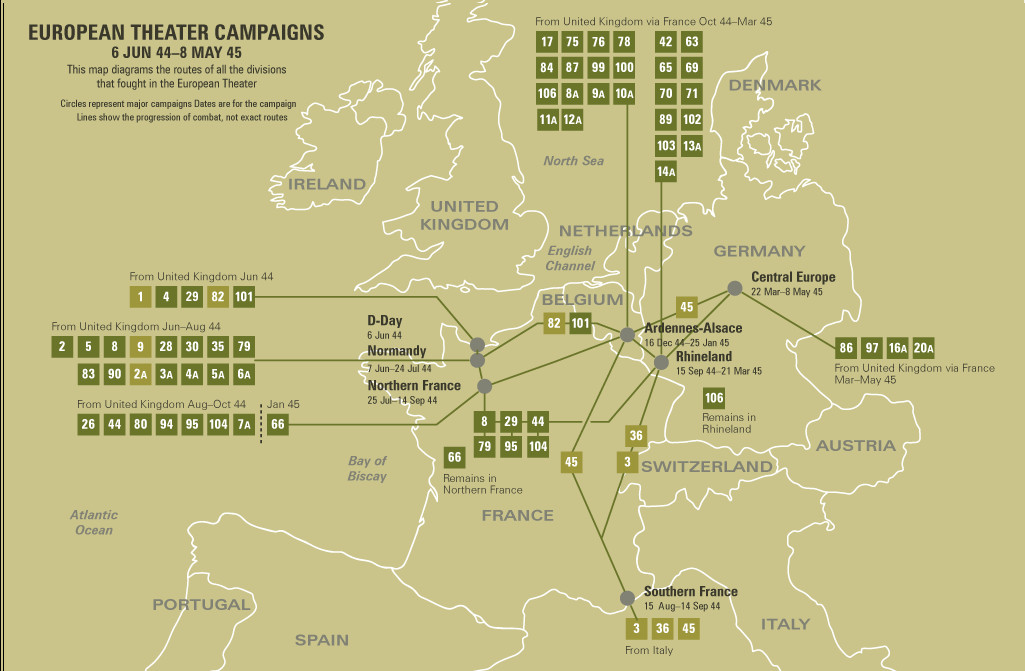 |
|
DIVISION CHRONICLEThe 83rd Infantry Division arrived in England on 16 April 1944. After training in Wales, the Division landed at Omaha Beach, 18 June 1944, and entered the hedgerow struggle south of Carentan, 27 June. Taking the offensive, the 83d reached the St. Lo-Periers Road, 25 July, and advanced 8 miles against strong opposition as the Normandy campaign ended. After a period of training, elements of the Division took Chateauneuf, 5 August, and Dinard, 7 August, and approached the heavily fortified area protecting St. Malo. Intense fighting reduced enemy strong points and a combined attack against the Citadel Fortress of St. Servan caused its surrender, 17 August. While elements moved south to protect the north bank of the Loire River, the main body of the Division concentrated south of Rennes for patrolling and reconnaissance activities. Elements reduced the garrison at Ile de Cezembre, which surrendered, 2 September. The movement into Luxembourg was completed on 25 September. Taking Remich on the 28th and patrolling defensively along the Moselle, the 83d resisted counterattacks and advanced to Siegfried Line defenses across the Sauer after capturing Grevenmacher and Echternach, 7 October. As the initial movement in operation "Unicorn," the Division took Le Stromberg Hill in the vicinity of Basse Konz against strong opposition, 5 November, and beat off counterattacks. Moving to the Hurtgen Forest, the 83d thrust forward from Gressenich to the west bank of the Roer. It entered the Battle of the Bulge, 27 December, striking at Rochefort and reducing the enemy salient in a bitter struggle. The Division moved back to Belgium and Holland for rehabilitation and training, 22 January 1945. On 1 March, the 83d advanced toward the Rhine in the operation "Grenade," and captured Neuss. The west bank of the Rhine from North of Oberkassell to the Erft Canal was cleared and defensive positions established by 2 March and the Division renewed its training. The 83d crossed the Rhine south of Wesel, 29 March, and advanced across the Munster Plain to the Weser, crossing it at Bodenwerder. As opposition disintegrated, Halle fell on 6 April. The Division crossed the Leine, 8 April, and attacked to the east, pushing over the Harz Mountain region and advancing to the Elbe at Barby. That city was taken on the 13th. The 83d established a bridgehead over the river but evacuated the area to the Russians on 6 May 1945. |
CHRONIQUE DE DIVISIONLa 83rd Infantry Division arriva en Angleterre le 16 avril 1944. Après s'être entraîné au Pays de Galles, la Division débarqua à Omaha Beach, le 18 juin 1944, et entra dans la lutte des haies au sud de Carentan, le 27 juin. Prenant l'offensive, le 83d atteint la route de St. Lo-Periers, le 25 juillet, et avance de 8 milles contre une forte opposition à la fin de la campagne de Normandie. Après une période d'entraînement, des éléments de la division prirent Châteauneuf le 5 août et Dinard le 7 août, et approchèrent de la zone fortement fortifiée qui protégeait Saint-Malo. Les combats intenses ont réduit les points forts de l'ennemi et une attaque combinée contre la citadelle de Saint-Servan a provoqué sa reddition, le 17 août. Tandis que les éléments se déplaçaient vers le sud pour protéger la rive nord de la Loire, le gros de la division se concentrait au sud de Rennes pour des activités de patrouille et de reconnaissance. Les éléments ont réduit la garnison à l'île de Cezembre, qui s'est rendue, le 2 septembre. L'entrée au Luxembourg s'est achevée le 25 septembre. Prenant Remich le 28 et patrouillant défensivement le long de la Moselle, le 83d a résisté aux contre-attaques et a avancé aux défenses de Siegfried Line à travers la Sauer après avoir capturé Grevenmacher et Echternach, le 7 octobre. En tant que mouvement initial de l'opération "Unicorn", la division a pris le Stromberg Hill à proximité de Basse Konz contre une forte opposition, le 5 novembre, et a battu les contre-attaques. En se déplaçant à la forêt de Hurtgen, le 83d s'est propulsé de Gressenich à la rive ouest du Roer. Il est entré dans la Bataille des Ardennes, le 27 décembre, frappant à Rochefort et réduisant le saillant ennemi dans une lutte acharnée. La Division est retournée en Belgique et en Hollande pour y être réhabilitée et entraînée, le 22 janvier 1945. Le 1er mars, la 83e s'est avancée vers le Rhin dans l'opération "Grenade" et a capturé Neuss. La rive ouest du Rhin, du nord d'Oberkassell au canal Erft, a été défrichée et des positions défensives ont été établies le 2 mars et la division a renouvelé son entraînement. La 83e traversa le Rhin au sud de Wesel, le 29 mars, et s'avança à travers la plaine de Munster jusqu'à la Weser, la traversant à Bodenwerder. Alors que l'opposition se désintégrait, Halle tomba le 6 avril. La Division traversa la Leine, le 8 avril, et attaqua à l'est, repoussant la région du Harz et s'avançant vers l'Elbe à Barby. Cette ville a été prise le 13. La 83e établit une tête de pont au-dessus de la rivière mais évacue la région vers les Russes le 6 mai 1945. |
| SOURCE INFORMATION & PHOTO | Armydivs.squarespace.com |
|---|
| SOURCE INFORMATION & SOURCE PHOTO | Findagrave.com - Arnaud Gaté - Abmc.gov - 83rdinfdivdocs.org - Devotional1000.rssing.com |
|---|---|
| PROGRAMMEURS | Eric, Henri, Garrett, Clive, Frédéric & Renaud |


